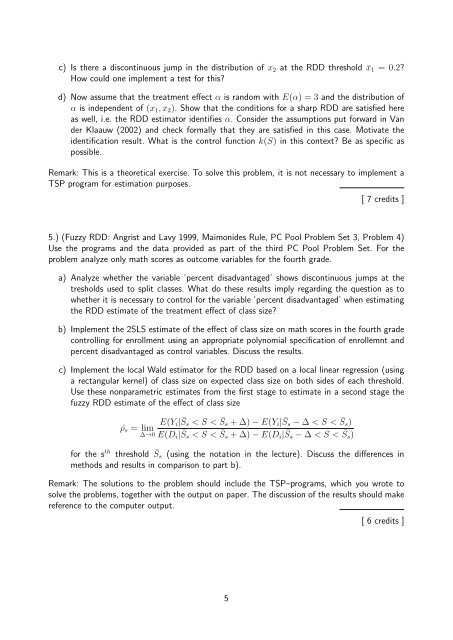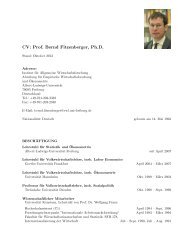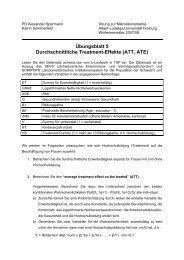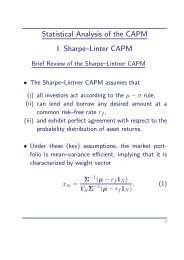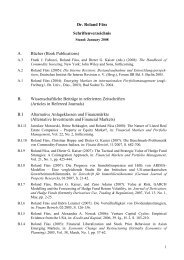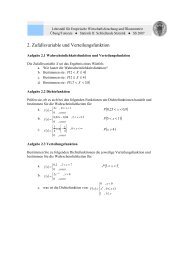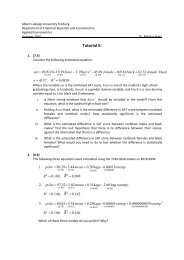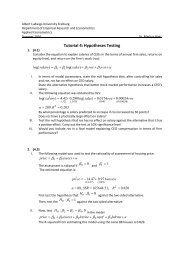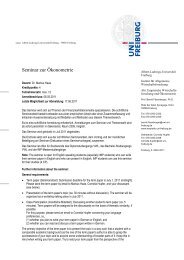Homework 2
Homework 2
Homework 2
You also want an ePaper? Increase the reach of your titles
YUMPU automatically turns print PDFs into web optimized ePapers that Google loves.
c) Is there a discontinuous jump in the distribution of x2 at the RDD threshold ¯x1 = 0.2?<br />
How could one implement a test for this?<br />
d) Now assume that the treatment effect α is random with E(α) = 3 and the distribution of<br />
α is independent of (x1, x2). Show that the conditions for a sharp RDD are satisfied here<br />
as well, i.e. the RDD estimator identifies α. Consider the assumptions put forward in Van<br />
der Klaauw (2002) and check formally that they are satisfied in this case. Motivate the<br />
identification result. What is the control function k(S) in this context? Be as specific as<br />
possible.<br />
Remark: This is a theoretical exercise. To solve this problem, it is not necessary to implement a<br />
TSP program for estimation purposes.<br />
[ 7 credits ]<br />
5.) (Fuzzy RDD: Angrist and Lavy 1999, Maimonides Rule, PC Pool Problem Set 3, Problem 4)<br />
Use the programs and the data provided as part of the third PC Pool Problem Set. For the<br />
problem analyze only math scores as outcome variables for the fourth grade.<br />
a) Analyze whether the variable ’percent disadvantaged’ shows discontinuous jumps at the<br />
tresholds used to split classes. What do these results imply regarding the question as to<br />
whether it is necessary to control for the variable ’percent disadvantaged’ when estimating<br />
the RDD estimate of the treatment effect of class size?<br />
b) Implement the 2SLS estimate of the effect of class size on math scores in the fourth grade<br />
controlling for enrollment using an appropriate polynomial specification of enrollemnt and<br />
percent disadvantaged as control variables. Discuss the results.<br />
c) Implement the local Wald estimator for the RDD based on a local linear regression (using<br />
a rectangular kernel) of class size on expected class size on both sides of each threshold.<br />
Use these nonparametric estimates from the first stage to estimate in a second stage the<br />
fuzzy RDD estimate of the effect of class size<br />
E(Yi|<br />
ˆρs = lim<br />
∆→0<br />
¯ Ss < S < ¯ Ss + ∆) − E(Yi| ¯ Ss − ∆ < S < ¯ Ss)<br />
E(Di| ¯ Ss < S < ¯ Ss + ∆) − E(Di| ¯ Ss − ∆ < S < ¯ Ss)<br />
for the s th threshold ¯ Ss (using the notation in the lecture). Discuss the differences in<br />
methods and results in comparison to part b).<br />
Remark: The solutions to the problem should include the TSP–programs, which you wrote to<br />
solve the problems, together with the output on paper. The discussion of the results should make<br />
reference to the computer output.<br />
5<br />
[ 6 credits ]


